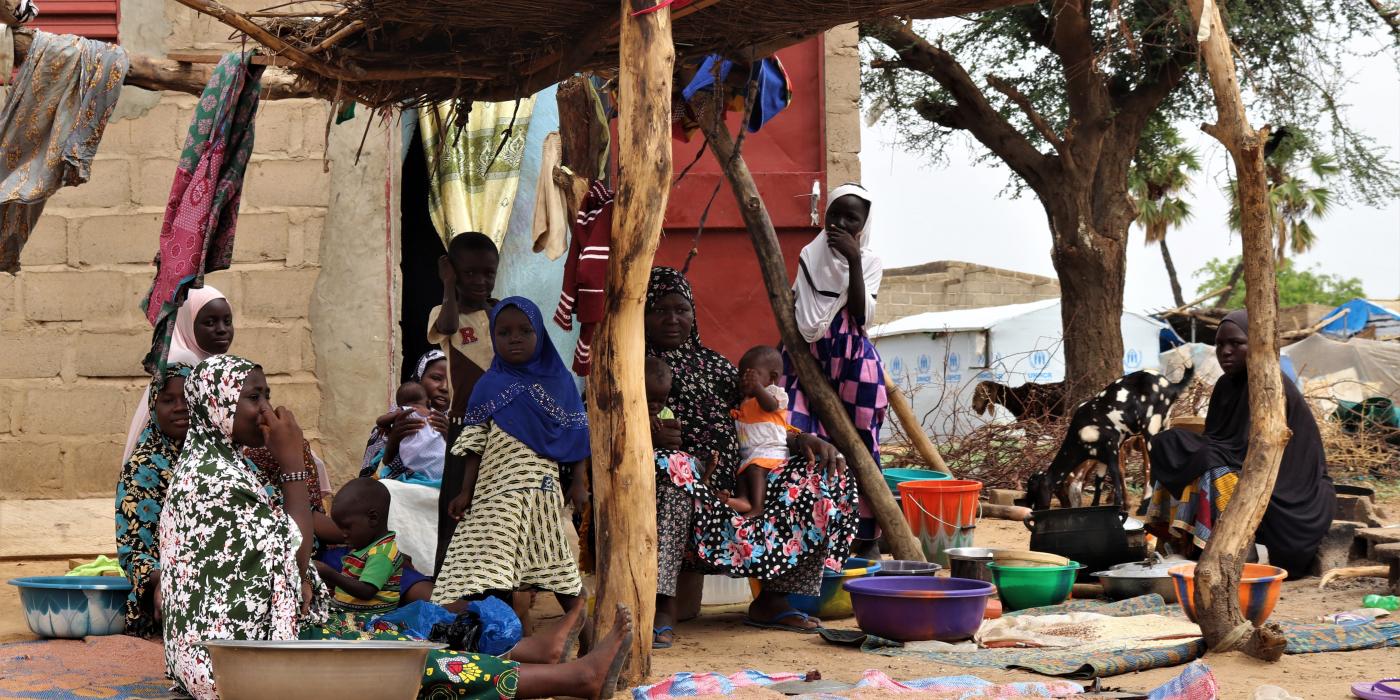In
2022, over 3.4 million citizens of Burkina Faso are facing food insecurity and
one important reason is the conflicts between different communities supported
by corresponding private companies (IFRC
2022). This kind of phenomenon has lasted for many years and led to
increasing worry about the current development paradigm of Burkina Faso’s
irrigation system: could private sectors truly helps this country to get out of
the shadow of famine (e.g. Le
Monde 2020)?
 |
| Figure 1: displaced family in Dori, Burkina Faso (NRC 2022) |
The private sectors, as many other countries, have
multiple impacts on the irrigation systems of Burkina Faso. This model has
secured the effective use of water resources in many places. On the other hand,
the private sector, which mainly supports the communities that plant cash crops,
is trying the grab the water which was used for growing subsistence crops for
basic food supply even with armed conflicts (Kambou et
al. 2019).
Some people might argue that with the huge negative
impacts that private companies have such as refugees, we should get back the
model of Thomas Sankara which is a top-down system with land and water
resources under government control as Burkina Faso has sufficient food only in
his period (Peterson
2021). But there are other realistic factors that we should consider:
cotton does increase the average income of local communities and contribute
valuable revenue to buy food to counter food shortages in the international
market, the government-guided crop communities are proven to be inefficient
when using water resources (Kambou et
al. 2019), and the current government of Burkina Faso itself, does
not have strong state capacity (World
Bank 2022). In this situation, I would suggest that the Burkina Faso
government should act in a more moderate way, which means cooperating with
private sector and acting more like a middleman between communities and private
sectors and between different communities. For instance, now the government
could license the upstream cotton communities first, which are using water
resources illegally now, to develop a negotiating mechanism between the
upstream and downstream crop communities. By developing this horizontal
mechanism across the country (Golooba-Mutebi
2012), although questions like unequal access to water resources would
still exist, it would be helpful to restore the current stagnant agricultural
production and irrigation caused by continuous inter-communal conflicts. The
government could also import private sectors in managing water resources in
these crop-based communities to increase water use efficiency (Kambou et
al. 2019).
From this point, we finished this journey which last
for one semester. As we have discussed in all the blogs, the relationship
between water and food in Africa is very complicated and food insecurity is a
systematic problem. We need comprehensive solutions with the for the two
questions with detailed investigation on local situation.
 |
| Figure 2: Land of Africa (Mavuno Technology 2022) |
Comments
Post a Comment